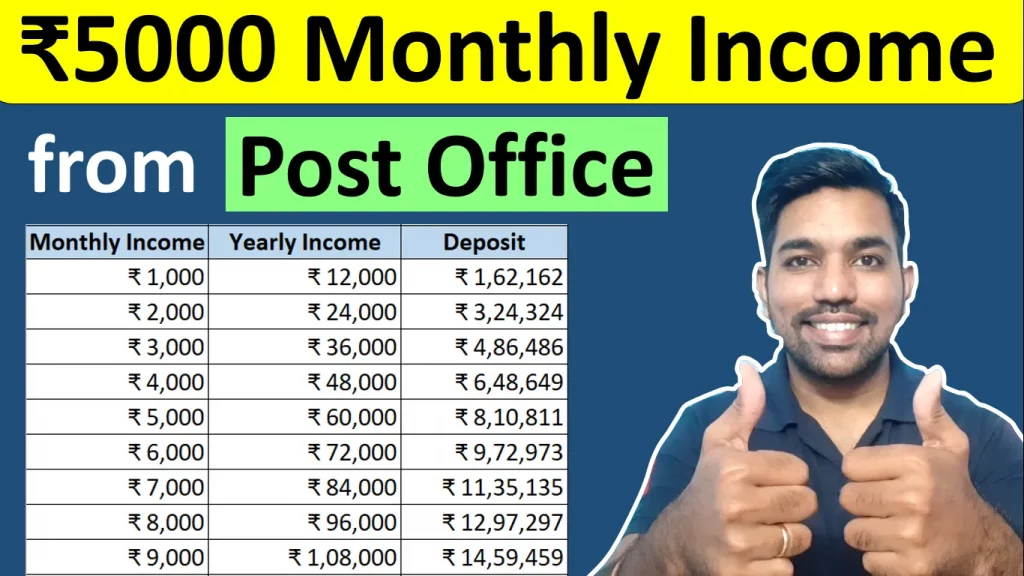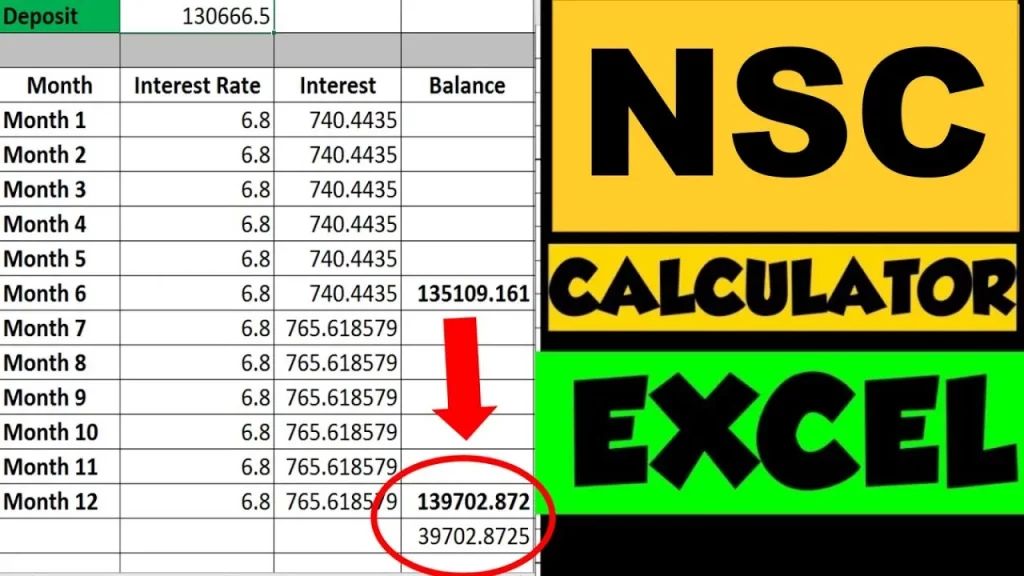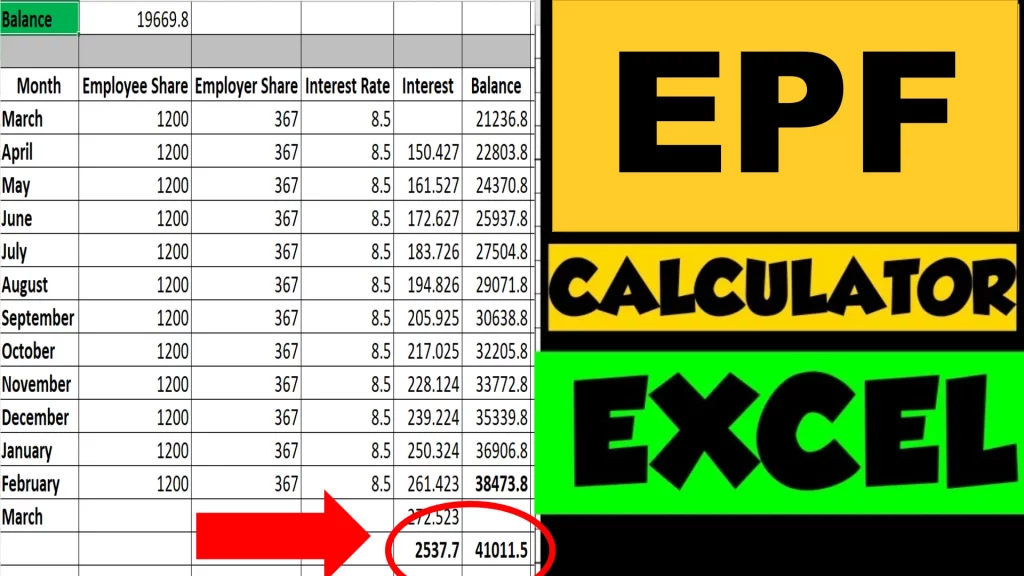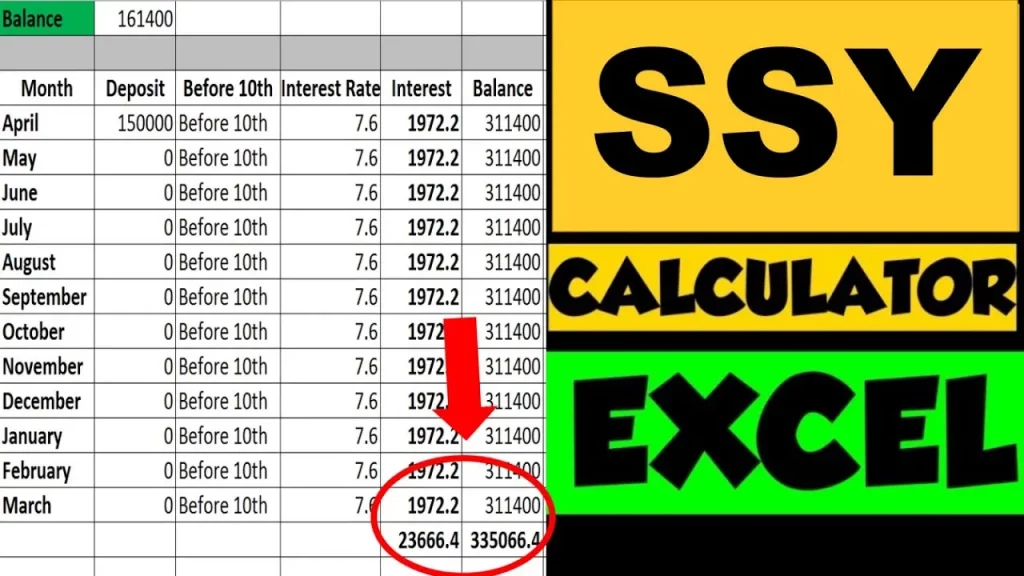Post Office Monthly Income Scheme helps us to get monthly income from post office based on the deposits made and interest rate. We will see how much deposits you need to make in post office to monthly income from Rs. 1000 to Rs. 9000 in this article.
For Rs. 5000 income per month from Post Office Monthly Income Scheme, you will have to deposit ₹ 8,10,811 at 7.4% interest rate and for Rs. 9000 per month, you need to deposit ₹ 14,59,459. These amount will be given back to you after 5 years tenure.
Watch below video to know the calculations for monthly income of Rs. 1000 to Rs. 9000.
Post Office Monthly Income Scheme Video

Watch more Videos on YouTube Channel
Above video helps us to know the approximate deposit amounts for monthly income of Rs. 1000 to Rs. 9000 from post office.
Post Office Monthly Income Scheme Features & Benefits
Let us now understand some important features and benefits of Post Office Monthly Income Scheme:
- Post Office Monthly Income Scheme or Post Office MIS is a fixed income scheme that gives regular payout every month on your deposits
- This is a Post office scheme for those looking for decent returns on their lump sum investment
- The tenure for Post Office MIS Scheme is 5 years, which means your money will be locked in for 5 years
- However, you can withdraw the amount if you are ready to bear some charges after 1 year of account opening.
- You can deposit minimum of Rs. 1000 and maximum of Rs. 9 Lakh in Single account and Rs. 15 Lakh in joint account of this scheme
- Maximum 3 adults are allowed as joint holders in this monthly scheme of post office
- The current interest rate in Post Office Monthly Income Scheme is 7.4% for January to March 2025 quarter
- This interest rate is reviewed by government of India every quarter
- The interest on which you open Post Office MIS will be fixed throughout 5 years of your tenure
- It is important to note that this monthly income is taxable. It is added to your total income and taxed as per the income tax slab rates if your income is above exemption limit
You can also use below calculator to check your monthly income from post office based on your deposits and interest rate:

How Post Office Monthly Income Scheme Works
It is very simple to understand how post office MIS scheme works:
- In order to get consistent monthly income, you need to accumulate desired corpus amount and deposit in this Post Office Scheme
- Based on your deposit and interest rate, your monthly income will be calculated
- Let’s say for example, you deposit Rs. 1 Lakh with 7.4% interest rate
- This annual interest rate is first converted to monthly interest rate by dividing by 12:
monthly interest rate = annual interest rate / 12
monthly interest rate = 7.4% / 12 = 0.6167%- Above monthly interest rate is used to find out the monthly income based on your deposit amount using below formula:
monthly income = monthly interest rate * Deposit / 100
monthly income = 0.6167% * Rs. 1,00,000 / 100 = Rs. 617- So as seen above, you get Rs. 617 per month as income based on your deposit of Rs. 1 Lakh for next 5 years
- After 5 years, you will get back your deposit of Rs. 1 Lakh
- In this way, Post Office Monthly Income Scheme provides your regular income every month based on your deposits
- You can deposit maximum up to Rs. 9 lakh in single account and Rs. 15 Lakh in joint account to get higher monthly income
Below is the screenshot of above calculations using the Post Office Monthly Income Scheme Calculator:
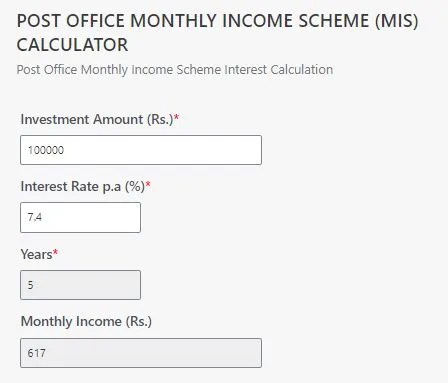
Deposits to earn Rs. 1000 to Rs. 9000 in MIS
Below is the table that shows you the total deposits to be made to get Rs. 1000 to Rs. 9000 as monthly income from MIS scheme at 7.4% interest rate:
| Monthly Income | Yearly Income | Deposits |
|---|---|---|
| ₹ 1,000 | ₹ 12,000 | ₹ 1,62,162 |
| ₹ 2,000 | ₹ 24,000 | ₹ 3,24,324 |
| ₹ 3,000 | ₹ 36,000 | ₹ 4,86,486 |
| ₹ 4,000 | ₹ 48,000 | ₹ 6,48,649 |
| ₹ 5,000 | ₹ 60,000 | ₹ 8,10,811 |
| ₹ 6,000 | ₹ 72,000 | ₹ 9,72,973 |
| ₹ 7,000 | ₹ 84,000 | ₹ 11,35,135 |
| ₹ 8,000 | ₹ 96,000 | ₹ 12,97,297 |
| ₹ 9,000 | ₹ 1,08,000 | ₹ 14,59,459 |
Please note that above figures are the exact deposits to be made based on the interest rate and monthly income mentioned.
The deposits must be multiple of Rs. 1000 so you might need to adjust the deposits accordingly.
ALSO READ: Rs. 2000 PPF Interest Calculation for 15 years
Post Office MIS Interest Rate
The latest interest rate in Post Office Monthly Income Scheme is 7.4% annually. This interest rate is subjected to be reviewed and updated by Government of India every quarter.
The interest rate at which you have opened the Post Office Monthly Income Scheme will be fixed throughout the tenure of your scheme.
ALSO READ: Latest Post Office Interest Rates of all Schemes
Which in Best Monthly Income Scheme in Post Office?
There are 2 schemes in post office that provides you regular income. We can categorize them as schemes for non senior citizens and senior citizens.
Non Senior Citizens
- For non senior citizens, this Post Office MIS scheme is suitable to get fixed regular income for next 5 years
- This will help them to cover the monthly expenses
- based on the deposits and interest rates, the monthly income is calculated as mentioned above
Senior Citizens
- For senior citizens, there is another post office scheme called SCSS (Senior Citizens Saving Scheme)
- SCSS scheme helps the senior citizens to get quarterly payout based on deposits and interest rate
- Current interest rate in SCSS is 8.2% for January to March 2025 quarter, so senior citizens can opt for SCSS instead of MIS scheme of post office
Use below calculator to calculate quarterly payout in SCSS Scheme:
USE CALCULATOR: Senior Citizen Saving Scheme Calculator
How to get Rs. 1000 monthly income from post office
Based on above calculation video, for monthly income of Rs. 1000 from MIS scheme, you need to deposit approximately Rs. 1,63,000 with interest rate of 7.4% annually.
The deposit amount will be given back to you after 5 years.
Conclusion
So Post Office Monthly Income Scheme is one of the attractive schemes to get regular monthly income based on your deposits and interest rates.
It is important to note that the monthly income must be added to your total income and taxed as per slab rates, if your income is above basic exemption limit.
Some more Reading:
- Rs. 1000 Sukanya Samriddhi Yojana Interest Calculation
- PPF vs Mutual Funds Which is Better?
- 3 Post Office Schemes with High Returns
Save Home Loan Interest Amount!
Use Home Loan Excel Calculator that will help you to Save Interest Amount on Home Loan EMI.
Click below button to download Home Loan EMI and Prepayment Calculator in Excel:
Watch how Home Loan Calculator in Excel Works
Income Tax Calculator App – FinCalC
For Income Tax Calculation on your mobile device, you can Download my Android App “FinCalC” which I have developed for you to make your income tax calculation easy.
What you can do with this mobile App?
- Calculate Income Tax for FY 2025-26 and previous FY 2024-25
- Enter estimated Investments to check income tax with Old and New Tax Regime
- Save income tax details and track regularly
- Know how much to invest more to save income tax
- More calculators including PPF, SIP returns, Savings account interest and lot more
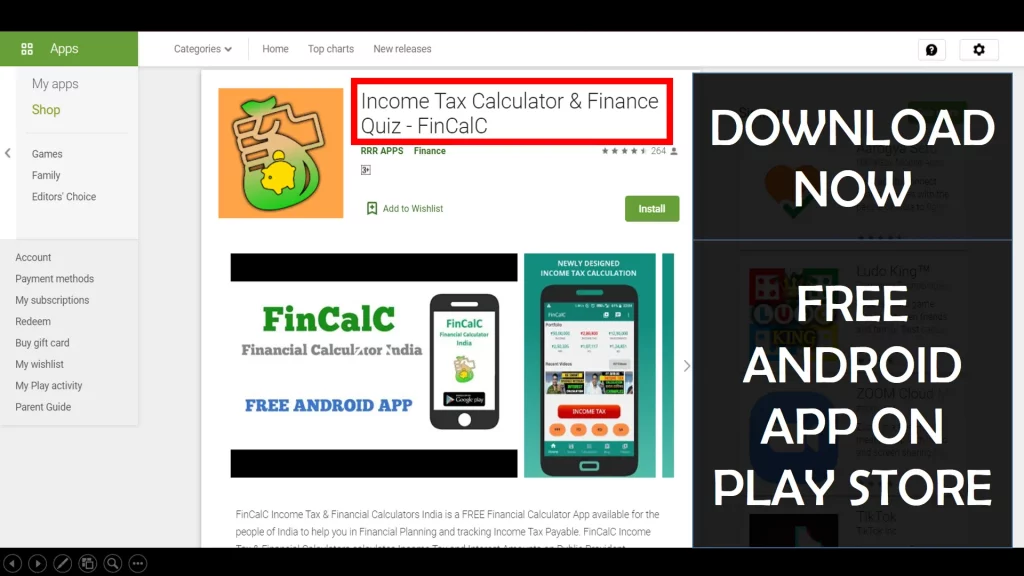
Use Popular Calculators:
- Income Tax Calculator
- Home Loan EMI Calculator
- SIP Calculator
- PPF Calculator
- HRA Calculator
- Step up SIP Calculator
- Savings Account Interest Calculator
- Lump sum Calculator
- FD Calculator
- RD Calculator
- Car Loan EMI Calculator
- Bike Loan EMI Calculator
- Sukanya Samriddhi Calculator
- Provident Fund Calculator
- Senior Citizen Savings Calculator
- NSC Calculator
- Monthly Income Scheme Calculator
- Mahila Samman Savings Calculator
- Systematic Withdrawal Calculator
- CAGR Calculator
I’d love to hear from you if you have any queries about Personal Finance and Money Management.
JOIN Telegram Group and stay updated with latest Personal Finance News and Topics.
Download our Free Android App – FinCalC to Calculate Income Tax and Interest on various small Saving Schemes in India including PPF, NSC, SIP and lot more.
Follow the Blog and Subscribe to YouTube Channel to stay updated about Personal Finance and Money Management topics.

